Achieve performance improvement and design flexibility at the same time! 750V/6mΩ Gen4 SiC FETs
Qorvo expands its UJ4C/SC 750V SiC FET series to a total of 13 devices while extending its performance leadership. Led by a new industry-leading 6mΩ R DS(on) SiC FET (Figure 1), the series includes 9, 11, 18, 23, 33, 44, and 60mΩ options. A robust short-circuit withstand rating of 5us is an added feature of the 6mΩ option (Figure 2). This performance and additional options now allow designers to achieve the best cost-efficiency trade-off while maintaining sufficient design margins and circuit robustness in power designs.
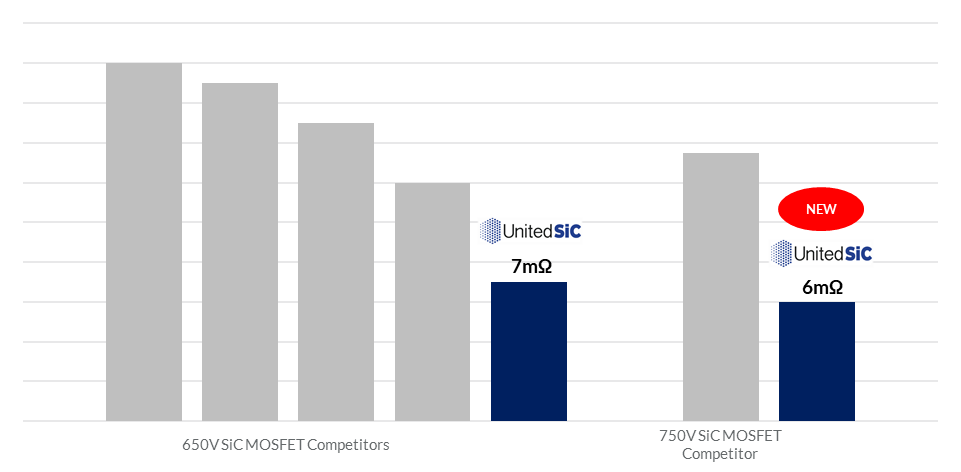
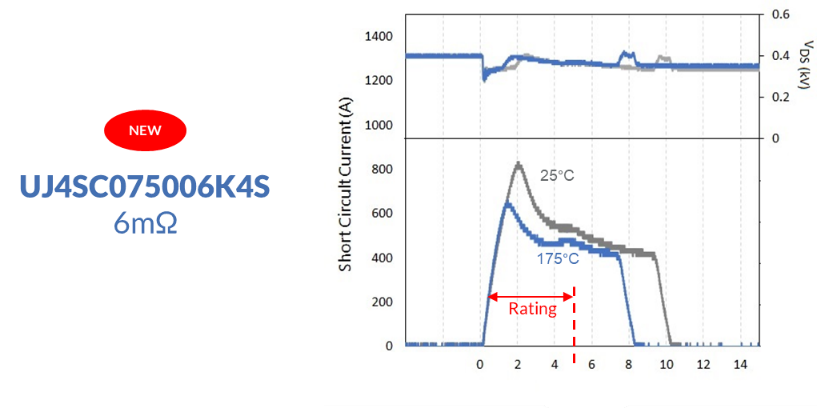
performance and flexibility
Qorvo has expanded its Gen4 SiC FET portfolio with industry-leading on-resistance x area (Ron x A) performance to provide best-in-class figures of merit across power levels. 750V SiC FETs with 6mΩ to 60mΩ on-resistance are offered in TO-247-3L and TO-247-4L packages. Figure 3 shows the expanded 750V portfolio. Nine new devices give designers greater flexibility to optimize system efficiency, thermal management complexity and cost without compromising on limited options. By choosing among 750V devices, designers can use the same benchmark technology provided by UnitedSiC, rather than designing with SiC components from multiple different manufacturers to cover a range of products. applications and power levels.
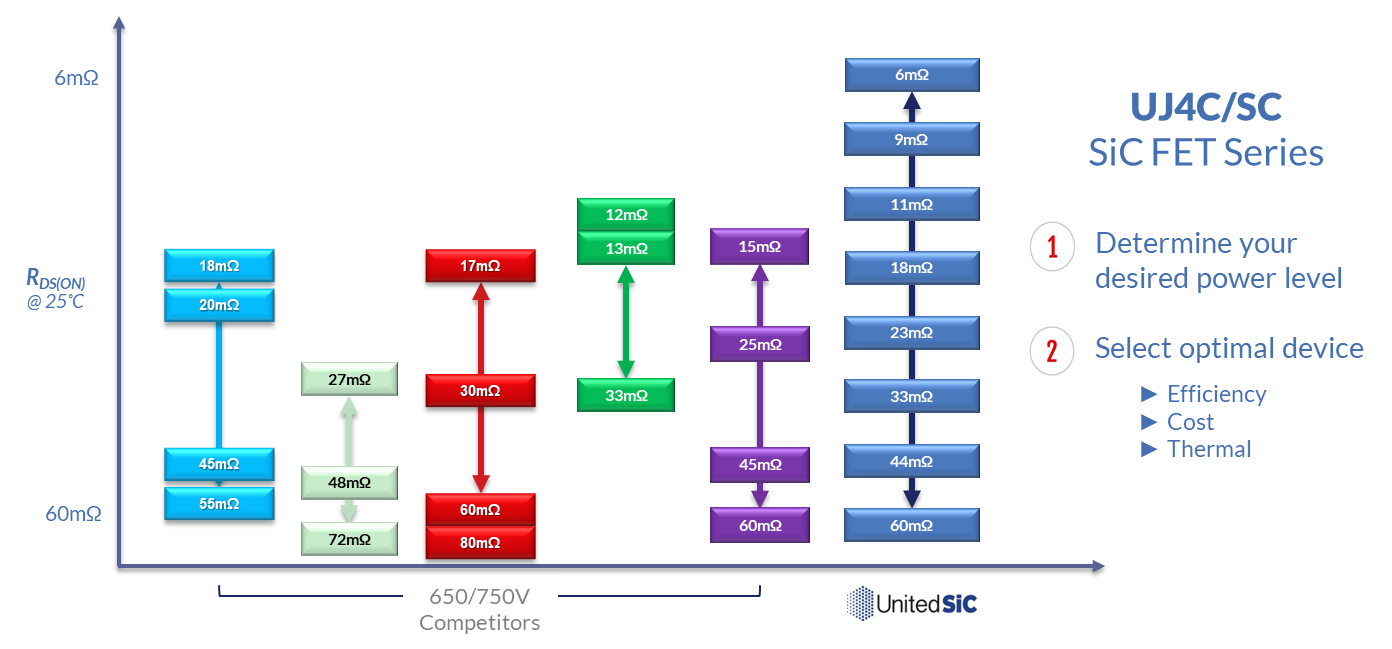
An example of the new SiC FET design flexibility is shown in Figure 4. Here we compare several devices in a 3.6kW totem pole power factor correction (TPPFC) circuit. 18mΩ or 60mΩ TO-247-4L FETs are ideal for TPPFC applications. The figure shows the performance obtained with the new 23mΩ, 33mΩ and 44mΩ 750V SiC FETs, reaching a peak efficiency of 99.3%. Designers choose UJ4C075018K4S when optimizing full-load efficiency or minimizing thermal management requirements is critical. If light to medium load efficiency and cost performance rank high in customer requirements, UJ4C075023K4S or UJ4C075033K4S are good choices. On the other hand, by coordinating the selection of low-power (eg 1.5kW) systems and low-cost options, designers can choose the UJ4C075044K4S and UJ4C075060K4S products. Each of these options can be evaluated in different topologies simply by using the Qorvo FET-Jet Calculator TM (https://www.qorvo.com/design-hub/design-tools/interactive/fet-jet-calculator) It shows that you can design for your growing product portfolio.
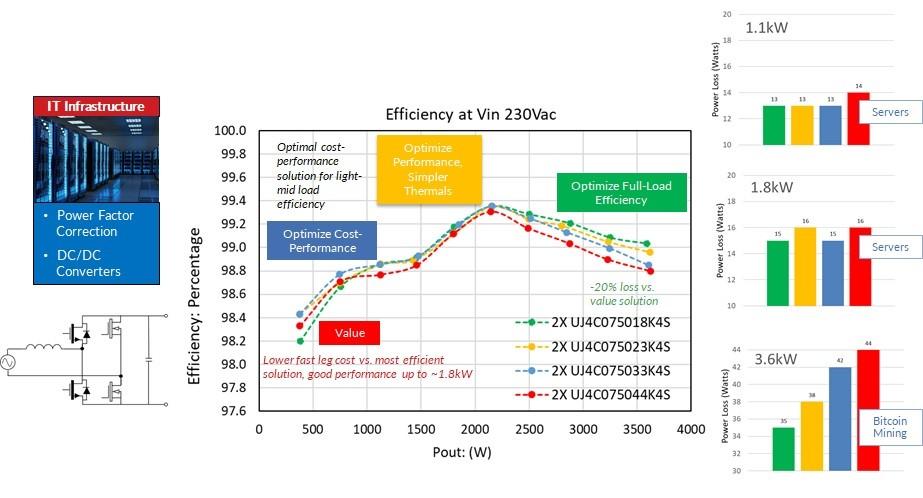
All of these can be used but have different efficiencies at full load.
More Design Margin at 750V
Qorvo's Gen4 SiC FETs to accelerate WBG adoption in automotive and industrial charging, traction inverters, solid-state circuit breakers, telecom rectifiers, data center PFC and DC/DC conversion, renewable energy and energy storage applications It offers breakthrough performance levels for which it was designed.
For 750V rated devices, design margin can be added for 400V or 500V battery/bus voltage applications. Despite increasing voltage ratings, these new devices employ advanced cell densities to reduce R DS(on) per unit area and the industry's lowest resistance values in any package provide the products of In addition, high current ratings are achieved through advanced sintered die attach technology for devices with improved thermal performance. The best on-resistance performance (Figure 5) results in significantly lower conduction losses over temperature.
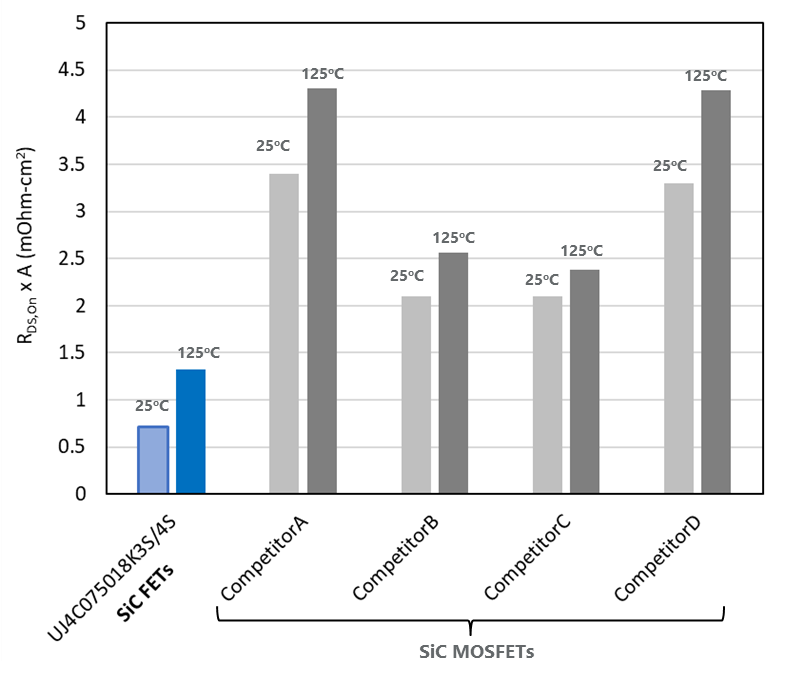
Ease of design is also featured in Qorvo SiC FET switches. All devices can be safely driven with standard 0V to 12V or 15V gate drive voltages. Good noise margins are maintained at the 5V threshold voltage. As with the previous generation, these new SiC FETs can operate with all common Si IGBT, Si MOSFET and SiC MOSFET drive voltages and incorporate ESD gate protection clamps.
figure of merit
In addition to their low on-resistance, these new SiCFETs improve efficiency in both hard-switching and soft-switching circuits. Hard-switched circuits, such as totem-pole PFCs and standard two-level inverters, have low on-resistance per unit area, low output capacitance, and near-zero charge stored in low-voltage Si MOSFETs, thus reducing the reverse recovery charge ( Q rr) and low E oss /Q oss. These devices exhibit excellent robust integrated diode characteristics with low voltage drop VF (<1.75V).
Gen4 SiC FETs also perform better in high frequency soft-switching resonant converter topologies such as LLC and PSFB. The breakthrough performance of the 750V FET is achieved by offering lower output capacitance C oss(tr) for the same R DS(on) while significantly reducing on-resistance . The soft-switching figure of merit (expressed as R DS(on) x Coss(tr)) advantage is best-in-class over the full operating temperature range used.
Comparison of SiC MOSFETs
The radar plot shown in Figure 6 summarizes the comparative advantage of Gen4 750V SiC FETs over competitive 650V SiC MOSFET products. Looking at key hard-switching and soft-switching parameters, SiC FETs are unmatched. The extremely low on-resistance per unit area enables standard discrete packages with performance levels unattainable with existing Si or emerging WBG competing technologies.
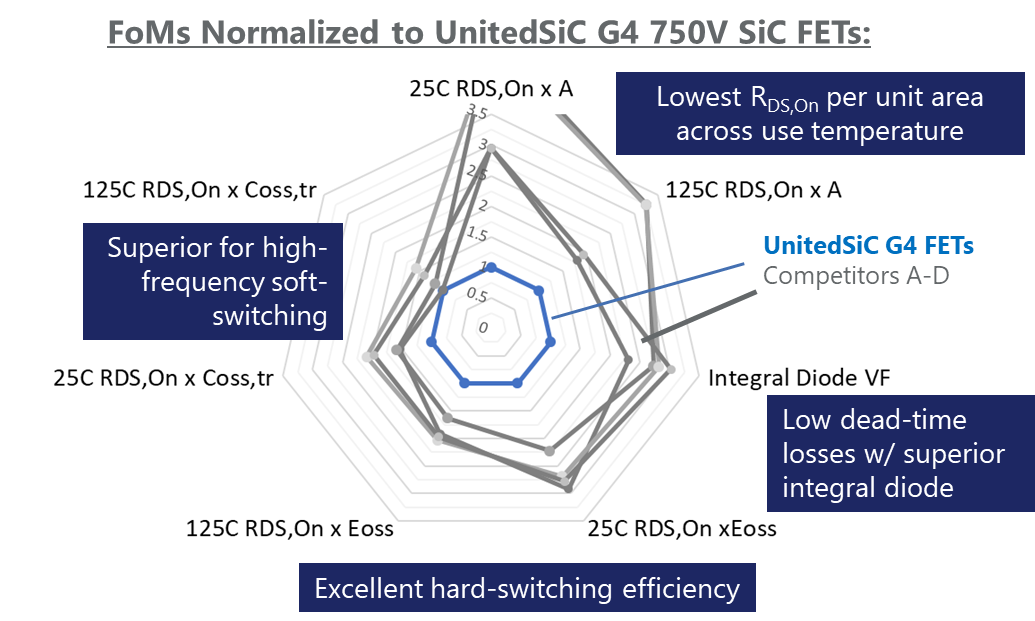
Summary
These SiC FETs from Qorvo offer a whole new level of performance enabled by advanced Gen4 technology. Qorvo offers new performance benchmarks with the introduction of 6mΩ SiC FETs. The broadest WBG portfolio in this voltage class gives users the design flexibility they need. The addition of the 750V option allows designers to add extra bus voltage margin. Key "figures of merit" provide SiC FET products with overall superior performance that power designers can benefit from in their next generation system designs.
For more information on these new devices, please visit https://www.qorvo.com/innovation/power-solutions/sic-power/gen4-sic-fets.
Inquiry
If you have any questions regarding this article, please contact us below.
Qorvo manufacturer information top page
If you want to return to Qorvo manufacturer information top page, please click below.
